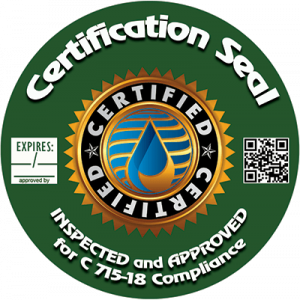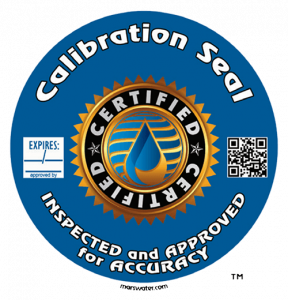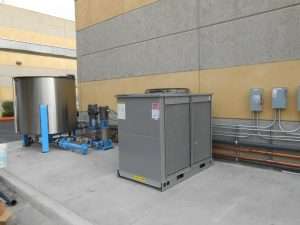Test Bench Recirculation Systems
The MARS Recirculation System recycles the test water used on the MARS Test Bench System(s), maintaining volume and pressure to test all the meters at the recommended AWWA Specifications, per Table 5-3 of the current AWWA M6 Manual.
MARS Test Bench Systems are designed to meet / exceed American Water Works Association (AWWA) recommendations, National Institute for Standards and Technology (NIST) Handbook 44 Specifications, ISO Specifications and other standards and requirements.
Advantages of Recirculation Systems
Compliance with local, state and/or Federal laws and regulations as it reduces the chemicals released into the environment
An immediate reduction in consumption of test water
An immediate reduction in water dumped to waste after each test
Improved customer perception as the City sets an example for water conservation practices
Standard and Optional Features
Available on every Test Bench Recirculation System configuration.
* Denotes Optional Items, contact MARS for details
Size dependent on configuration, as tanks and pumps can optionally service multiple benches.
Systems are equipped with filtration and chlorination to ensure clean test water.
Offers the ability to use either city or recirculation for supply, making a redundant system (i.e., if one system is inoperable, the other can be used).
Utilizes a storage tank and system of pumps and VFD’s (if necessary) to recirculate water through the test bench, minimizing overall water use.
Under normal conditions, municipal water is only used to fill recirculation tank and maintain sufficient water levels during operation.
Requires a return pump (unless re-circulation tank is below measurement tank) and pump to direct water from the measurement tank back to re-circulation tank.
Frame
- Fabricated steel
- Welded in accordance to standard industry practices and certifications
Coating
- Polyester Coating in MARS Blue
- Minimum of 20 years resistance to corrosion
- High impact resistance
- All steel is fully sandblasted and treated with Atochem rust proof primer before being coated for total bonding
- Frame is not touched by human hands within at least 2 hours of drying
- Coating is applied using the electrostatic method, then placed in an oven at 495 degrees F until fully bonded
- The frame is electrostatically spark tested to detect defects
Tanks and Piping
- Properly sized polyethylene or stainless steel tank (dependent on configuration)
- All related piping and valves are included
Pumps
- Supply pump(s) (one for each Small Meter Test Bench and two for each Large Bench)
- Return pump(s), based on the number of test tanks within the system
- The number of VFD’s is predicated on the number of supply pumps and Test Bench System within the configuration
- VFD panel / enclosure
Chlorination System
- Pump
- Filtration System
- Automatic timer
Brochures and Datasheets
Water Meter Test Bench Systems Brochure 3 MB 1208 downloads
For over 30 years MARS Company has proven itself in the waterworks industry as the...AWWA C715-22 Compliant Test Bench Upgrade Datasheet 2 MB 445 downloads
MARS Company, a global leader in water meter testing and technology solutions, offers...Recirculation Systems Datasheet 464 KB 266 downloads
Designed for use with every MARS Test Bench System, the Recirculation provides the...MCC Datasheet 1 MB 504 downloads
MARS Calibration, Maintenance and Support Program (MCC~MARS Calibration Certification)...Press Releases

Is your Water Meter Test System ANSI/AWWA C715-18 Compliant?
MARS Company offers the first and only Test Bench Equipment Upgrade Program, enabling customers to upgrade their existing MARS test bench equipment to comply with the ANSI / AWWA C715-18 industry standard.
Is your Meter Shop Certified?
With MARS Maintenance Calibration Certification (MCC), you can protect both MARS and select third-party equipment with calibration, technical assistance, software upgrades, preventative maintenance, training, spares management, and on-site maintenance.



